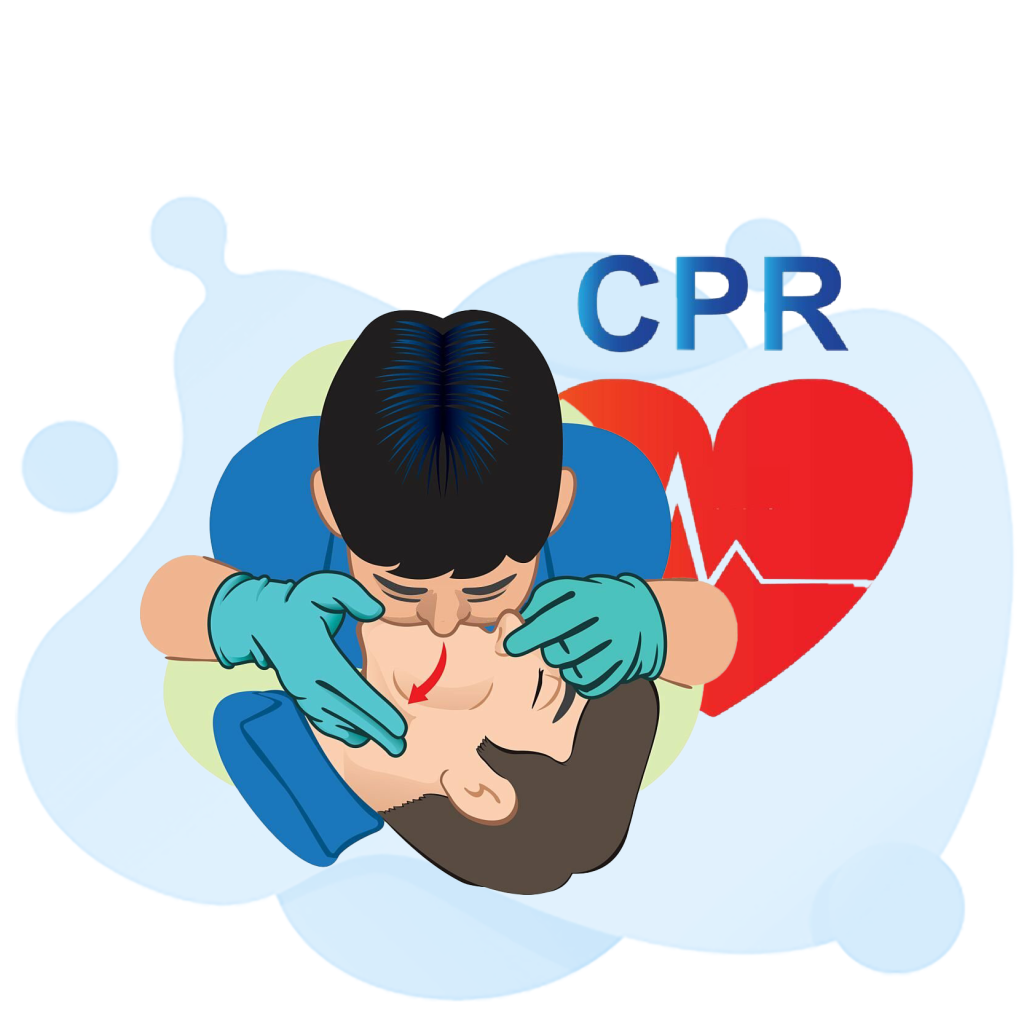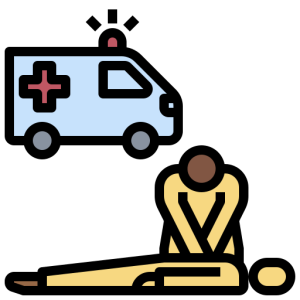CPR Practice Test 2025

CPR (Cardiopulmonary Resuscitation) practice tests 2025 serve as pivotal tools in training individuals to respond effectively in emergency situations. These assessments replicate scenarios where life-saving techniques are required, offering participants an opportunity to apply their CPR knowledge and skills. The practice tests cover crucial aspects of CPR, including chest compressions, rescue breaths, and the proper sequence of actions. By simulating real-life emergencies, these tests not only reinforce the theoretical knowledge of CPR but also instill confidence and readiness to respond swiftly and appropriately when facing a cardiac arrest or other life-threatening situations.
FREE CPR Practice Test Online
CPR Certification
CPR (Cardiopulmonary Resuscitation) certification stands as a testament to an individual’s proficiency in administering life-saving techniques during emergencies. It involves comprehensive training in CPR procedures, equipping individuals with the necessary skills to respond effectively to cardiac arrest, choking, or other life-threatening situations. The certification programs cover various aspects, including recognizing emergencies, initiating CPR, performing chest compressions, and providing rescue breaths. These programs are designed to ensure that certified individuals possess the knowledge and skills to intervene confidently and competently in critical situations.
CPR certification programs typically involve hands-on training, theoretical coursework, and practical assessments. Participants learn the correct techniques for performing CPR on adults, children, and infants. The training modules cover the steps for assessing the situation, initiating CPR, utilizing an Automated External Defibrillator (AED), and coordinating with emergency medical services. The certification process ensures that individuals comprehend the critical aspects of CPR, such as compression depth, hand placement, and the timing and sequence of actions. Successful completion of these programs results in a CPR certification, signifying the individual’s readiness to respond effectively in emergencies.
CPR certification holds significant importance in various professions and personal capacities. For healthcare professionals, such as nurses, doctors, and emergency responders, CPR certification is often a mandatory requirement. However, it is equally vital for educators, childcare providers, fitness instructors, and individuals in many other roles to hold CPR certification. Moreover, it serves as an essential skill for anyone interested in being prepared to help in emergency situations. The certification not only assures employers and communities of an individual’s readiness to respond in a crisis but also instills confidence in the certified individual, knowing they can offer life-saving assistance if needed.
CPR certification programs provide comprehensive training in life-saving techniques, ensuring individuals possess the skills and knowledge necessary to respond effectively in emergency situations.
CPR Classes
CPR (Cardiopulmonary Resuscitation) classes play a pivotal role in empowering individuals with life-saving skills. These classes offer comprehensive training in responding to cardiac arrest, choking, and other critical emergencies. Participants learn the fundamental techniques and protocols essential to provide immediate assistance in life-threatening situations. The classes cover a range of topics, from recognizing cardiac arrest to initiating CPR, performing chest compressions, and providing rescue breaths. Through both theoretical knowledge and practical hands-on sessions, CPR classes aim to equip individuals with the confidence and competence to act swiftly in emergencies.
The structure of CPR classes varies, encompassing different modules to cater to diverse needs and audiences. Basic CPR classes typically cover adult CPR techniques, while more extensive courses may include training for child and infant CPR, AED (Automated External Defibrillator) usage, and first aid. These classes are often led by certified instructors who guide participants through simulations, providing a practical understanding of emergency response. Moreover, these classes are not only for healthcare professionals; they are valuable for educators, parents, fitness instructors, and individuals from various professions seeking to acquire life-saving skills.
The impact of CPR classes extends far beyond the individuals directly participating. The knowledge and skills gained in these classes have the potential to save lives within communities. Prompt and effective CPR provided by a bystander significantly increases the chances of survival for someone experiencing cardiac arrest. By empowering more individuals with CPR skills through these classes, communities become better equipped to respond to emergencies, bolstering the overall safety and well-being of society. These classes serve as an avenue for spreading awareness and promoting a culture of preparedness, encouraging more people to become first responders in times of crisis.
CPR classes provide individuals with the knowledge and practical skills to respond effectively to life-threatening emergencies, fostering a culture of preparedness and empowering communities to save lives.

CPR and First Aid Training
CPR (Cardiopulmonary Resuscitation) and first aid training are indispensable components of emergency preparedness, offering individuals the skills and confidence to respond effectively to critical situations. These training programs encompass a spectrum of lifesaving techniques, including CPR procedures, managing injuries, and addressing medical emergencies. Participants learn the fundamentals of CPR, from recognizing cardiac arrest to initiating chest compressions and providing rescue breaths. First aid training, on the other hand, covers a broad range of skills such as wound care, treating burns, managing fractures, and handling allergic reactions. This comprehensive training equips individuals to respond to a variety of emergencies with confidence and competence.
CPR and first aid training programs are designed to be accessible to a wide range of individuals, from healthcare professionals to parents, educators, fitness instructors, and community members. The curriculum typically includes both theoretical learning and practical hands-on sessions. Participants learn the proper techniques and protocols, allowing them to practice in simulated emergency scenarios under the guidance of certified instructors. These programs often emphasize the importance of quick and effective response, enabling individuals to act promptly and confidently during emergencies, potentially saving lives before professional medical help arrives.
The impact of CPR and first aid training extends beyond the individual participants. Communities benefit significantly from having more individuals trained in these lifesaving skills. Prompt and effective intervention can make a substantial difference in the outcomes of emergencies. Empowering more people with the knowledge and confidence to provide immediate assistance in critical situations helps build a safer environment for all. Additionally, the culture of preparedness cultivated by these training programs can lead to greater awareness and quicker responses in emergencies, enhancing the overall safety and well-being of communities.
CPR and first aid training programs equip individuals with the knowledge and skills to respond effectively to a wide array of emergencies, fostering a culture of readiness and preparedness in communities.
CPR Renewal Online
CPR (Cardiopulmonary Resuscitation) renewal online presents a valuable avenue for individuals to refresh and update their life-saving skills conveniently and efficiently. This mode of renewal caters to those who have previously obtained CPR certification and are seeking to maintain their proficiency. Through online platforms, individuals can access updated materials, review essential techniques, and stay current with the latest CPR guidelines. The renewal process typically involves revisiting the key components of CPR, such as chest compressions, rescue breaths, and proper AED (Automated External Defibrillator) usage, ensuring that certified individuals are well-prepared to respond to emergencies.

CPR renewal online offers a flexible and accessible means for individuals to maintain their CPR certification. These programs often provide a comprehensive review of CPR protocols and updates on any changes in guidelines or best practices. Participants can complete the renewal process at their own pace, accessing materials and assessments remotely. This method allows certified individuals to refresh their skills without the constraints of attending in-person classes, catering to their schedules and ensuring the continuous retention of life-saving techniques.
The value of CPR renewal online lies in its ability to uphold the readiness of individuals to respond effectively in emergencies. Timely and accurate CPR plays a crucial role in improving the outcomes of cardiac arrest situations. By renewing their CPR certification online, individuals ensure they are up-to-date with the latest techniques and protocols. This not only reinforces their skills but also guarantees that they are well-prepared to intervene in critical situations, contributing to a safer environment within their communities.
CPR renewal online is a flexible and accessible method for individuals to maintain their CPR certification, ensuring they stay updated on the latest techniques and guidelines for life-saving interventions.
CPR Test Questions
CPR (Cardiopulmonary Resuscitation) test questions are an integral component of evaluating an individual’s readiness and knowledge in responding to emergencies. These questions cover a wide array of scenarios and techniques, testing a participant’s grasp of CPR procedures, including recognizing emergencies, initiating chest compressions, and providing rescue breaths. The questions are designed to assess an individual’s comprehension of critical aspects of CPR, such as proper hand placement, compression depth, and the sequence of actions. Through these assessments, participants can evaluate their preparedness and understanding of life-saving techniques.
The structure of CPR test questions often spans various categories, covering adult, child, and infant CPR scenarios, as well as the utilization of an Automated External Defibrillator (AED). These questions are typically found in CPR certification exams or practice assessments, providing a comprehensive evaluation of an individual’s ability to recognize emergencies and execute proper CPR techniques. Test questions play a crucial role in reinforcing the theoretical knowledge acquired during training sessions, ensuring that individuals can effectively apply their skills in real-life situations.
The importance of CPR test questions lies in their ability to assess and reinforce an individual’s readiness to respond to emergencies. Through simulated scenarios and knowledge-based queries, these questions challenge participants to recall and apply their training in diverse emergency situations. By regularly engaging with these questions, individuals can reinforce their skills, refine their knowledge, and identify areas for improvement. Additionally, these test questions serve as a means of continuous learning, ensuring that individuals remain well-equipped and prepared to intervene in critical situations.
CPR test questions play a pivotal role in evaluating and reinforcing an individual’s comprehension and readiness to respond effectively in emergency situations.

CPR Certification Cost
CPR (Cardiopulmonary Resuscitation) certification is a fundamental credential that equips individuals with life-saving skills, but the cost associated with obtaining this certification can vary depending on several factors. The price of CPR certification typically covers the cost of training materials, instructor fees, administrative expenses, and the certification exam. The overall cost varies based on the type of certification sought, the provider or institution offering the training, the level of training (basic, advanced, pediatric, etc.), and the inclusion of additional components such as first aid training or AED (Automated External Defibrillator) instruction.
The cost of CPR certification can vary significantly based on the type of training sought. Basic CPR and AED courses usually have a lower cost compared to more comprehensive certifications that include pediatric CPR, first aid, or advanced life support training. Additionally, the provider or institution delivering the training can influence the cost; community centers, nonprofit organizations, healthcare institutions, or private training facilities may offer courses at differing price points. Some providers bundle the certification cost, which may include training materials and the exam fee, while others may charge separately for these components.
Factors such as geographical location and the level of expertise of the instructors can also impact CPR certification costs. In regions with higher living expenses or areas where certification providers are limited, the cost of CPR training might be higher. Moreover, certification costs can differ based on the expertise of the instructors and the additional resources provided during the training. Individuals seeking CPR certification should explore various providers, compare costs, and consider the value and inclusivity of the training program to ensure they receive a comprehensive and worthwhile certification experience.
The cost of CPR certification can fluctuate based on various factors, including the type of certification, the training provider, additional components included, and the geographical location, ensuring a range of options to suit individual needs and budgets.
CPR Study Guide
A CPR (Cardiopulmonary Resuscitation) study guide serves as a comprehensive and structured resource to aid individuals in learning and revising the essential techniques and protocols required for emergency response. These guides cover a range of topics, including recognizing emergencies, performing CPR on adults, children, and infants, using an Automated External Defibrillator (AED), and providing basic first aid. The study guide breaks down these critical aspects of CPR into accessible sections, offering in-depth explanations, visual aids, and practice scenarios. It serves as a vital tool to reinforce theoretical knowledge and practical skills, ensuring individuals are well-prepared to respond effectively in emergency situations.

The structure of a CPR study guide typically encompasses various sections, each focusing on a specific aspect of CPR and emergency response. Visual aids, diagrams, and step-by-step instructions help individuals understand proper hand placement, compression depth, and the sequence of actions during CPR. These study guides often include practice questions and scenarios that simulate real-life emergencies, allowing individuals to test their knowledge and skills. The guide acts as a companion for both initial training and recertification, aiding individuals in reinforcing their skills and staying updated with the latest CPR guidelines.
The value of a CPR study guide lies in its ability to provide a structured and comprehensive approach to learning and practicing life-saving techniques. The guide not only aids individuals during their training but also serves as a reference for ongoing revision and preparation. Whether preparing for a certification exam or seeking to refresh CPR skills, the study guide plays a crucial role in instilling confidence and competence in individuals. By offering a detailed and accessible resource, it ensures that individuals are well-prepared to intervene in emergencies, potentially saving lives and contributing to a safer environment for everyone.
A CPR study guide offers a structured and comprehensive resource for individuals to learn, revise, and practice life-saving techniques, contributing to their preparedness and competence in responding to emergencies.
CPR Certification Requirements
CPR (Cardiopulmonary Resuscitation) certification serves as a fundamental credential for individuals seeking to acquire life-saving skills, and the requirements for obtaining this certification can vary based on different factors. The primary criterion for CPR certification typically involves completing a recognized CPR training course. These courses are offered by various organizations, such as the American Heart Association or the American Red Cross, and cover crucial CPR techniques, including recognizing cardiac arrest, initiating chest compressions, and providing rescue breaths. The requirements might differ based on the level of certification sought, such as basic CPR, advanced life support, or pediatric CPR.
The prerequisites for CPR certification might also vary based on the specific industry or field an individual is associated with. For instance, healthcare professionals, such as nurses, doctors, or emergency medical technicians, may have additional requirements or specific certifications needed for their line of work. Furthermore, the duration and content of the training course may affect the certification requirements. Some certifications might necessitate additional components like AED (Automated External Defibrillator) training, first aid knowledge, or pediatric CPR. Typically, certification courses are a combination of theoretical learning, hands-on practice, and a final assessment to gauge an individual’s competency in performing CPR techniques.
Renewal and recertification requirements are also integral parts of CPR certification. Certifications often have an expiration date, typically every two years, requiring individuals to renew their credentials. To renew certification, individuals might need to retake a CPR course, complete a refresher training, or pass a recertification exam. Regular updates and staying current with the latest CPR guidelines are essential for maintaining the certification, ensuring that individuals are equipped with the most recent life-saving techniques. Additionally, specific workplaces or organizations may have their own set of requirements for CPR certification, necessitating employees to possess a valid CPR credential.
CPR certification requirements encompass completion of a recognized CPR training course, the level of certification sought, and potential industry-specific or workplace-related prerequisites. These requirements aim to ensure that certified individuals are well-prepared and competent in responding to emergencies.